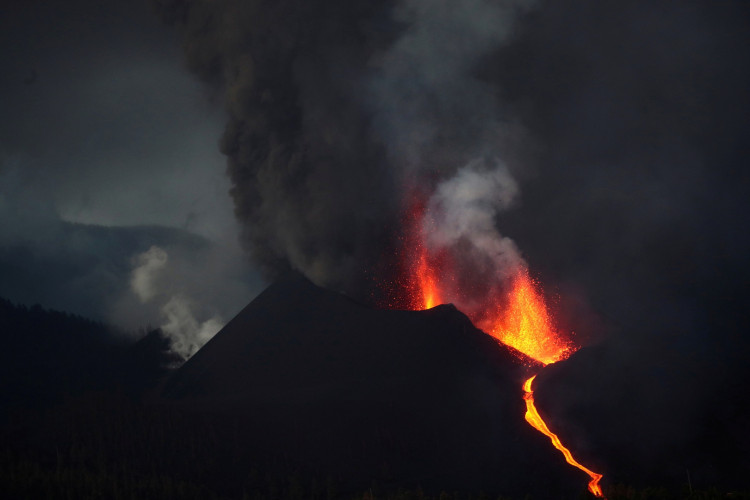In the coastal town of Grindavik, Iceland, residents faced a harrowing situation as a volcanic eruption sent molten lava towards their homes. This latest eruption, part of a series that began in the region in 2021, marked a significant natural disaster for the small fishing community.
The event unfolded rapidly, beginning in the early hours of Sunday, with seismic activity prompting authorities to evacuate Grindavik for the second time since November due to the imminent threat of volcanic activity. Despite recent efforts to build defensive barriers to protect the town, the eruption's intensity overcame these defenses, leading to at least one house catching fire.
The fissures that opened in the ground released fountains of molten rock and smoke, spanning a considerable area and reaching the outskirts of Grindavik. The town, situated about 40 kilometers southwest of the capital, Reykjavik, experienced a significant threat to its infrastructure, although thankfully no lives were in danger. The eruption also led to the closure of the nearby Blue Lagoon geothermal spa, a popular tourist destination.
VIDEO: A volcano erupts north of the Icelandic fishing village of Grindavik, just hours after local residents were evacuated, as seen in images filmed from an Icelandic Coastguard helicopter.
This is Iceland's fifth volcanic eruption in almost three years. The most recent… pic.twitter.com/WYyZuiW5v8 — AFP News Agency (@AFP) January 15, 2024
Iceland's President Gudni Johannesson reassured the public through social media that no lives were at risk and that there had been no interruptions to flights. The eruption, occurring in the Reykjanes peninsula, followed a previous outbreak in the Svartsengi volcanic system in December. This series of eruptions is part of Iceland's rich volcanic history, with the island nation home to over 30 active volcanoes.
In contrast to the disruptive 2010 Eyafjallajokull eruption, which grounded thousands of flights across Europe, the Reykjanes volcano systems are not trapped under glaciers and are thus not expected to produce similar widespread ash clouds. Nonetheless, the event posed significant challenges to the residents of Grindavik and the surrounding area.
As a country that has become a prime destination for volcano tourism, this latest eruption is a stark reminder of the constant geological changes and challenges faced by Iceland. The small Nordic island, roughly the size of the U.S. state of Kentucky, continues to attract thousands of visitors intrigued by its unique volcanic landscape. However, for the residents of Grindavik, this natural spectacle came at a high cost, as they grappled with the immediate impacts of the lava flows on their homes and community.
The eruption of the volcano near Grindavik serves as a vivid example of the dynamic and often unpredictable nature of Iceland's geology. While posing no direct threat to human life, the event significantly impacted local infrastructure and highlighted the ongoing need for vigilance and preparedness in the face of Iceland's active volcanic landscape.






